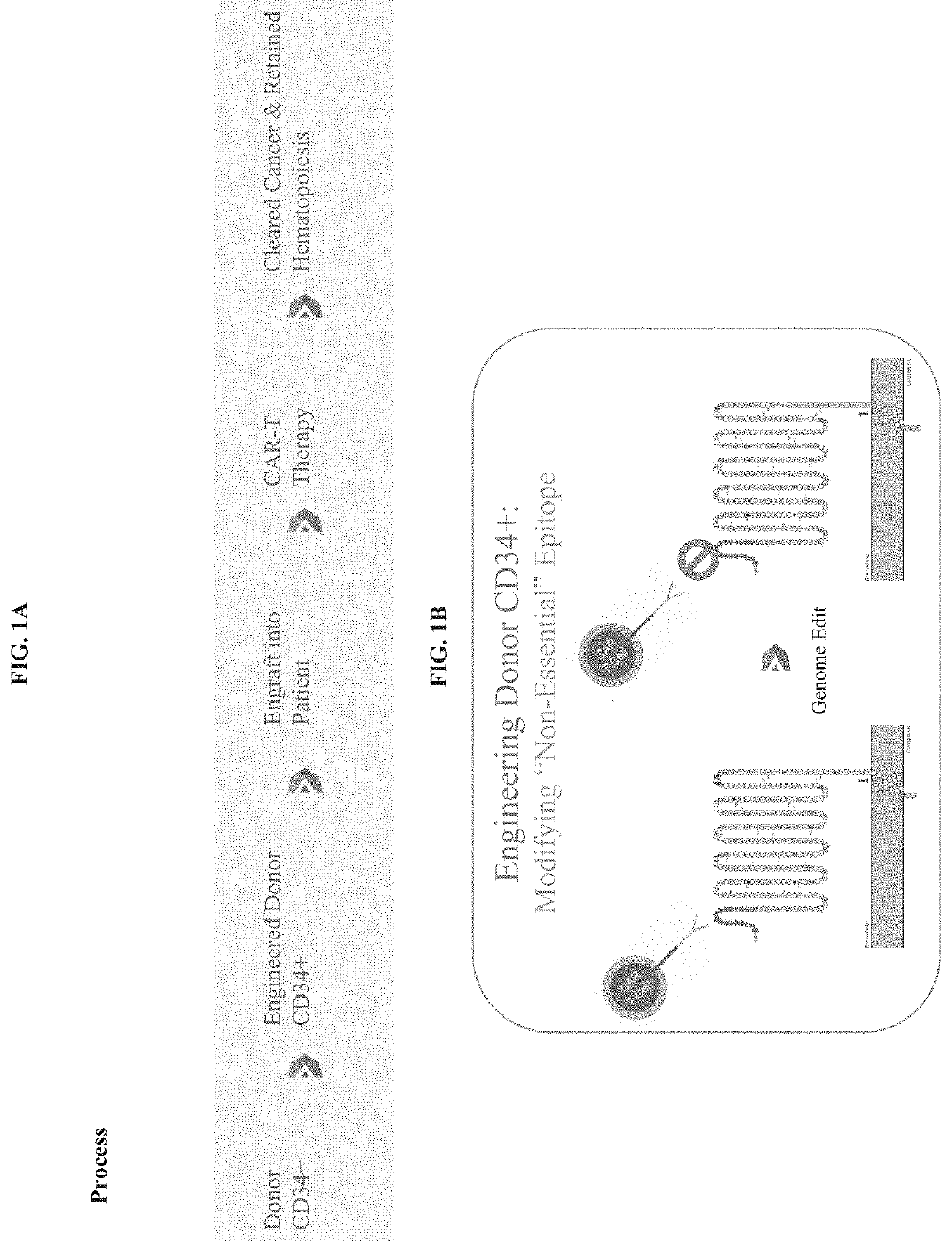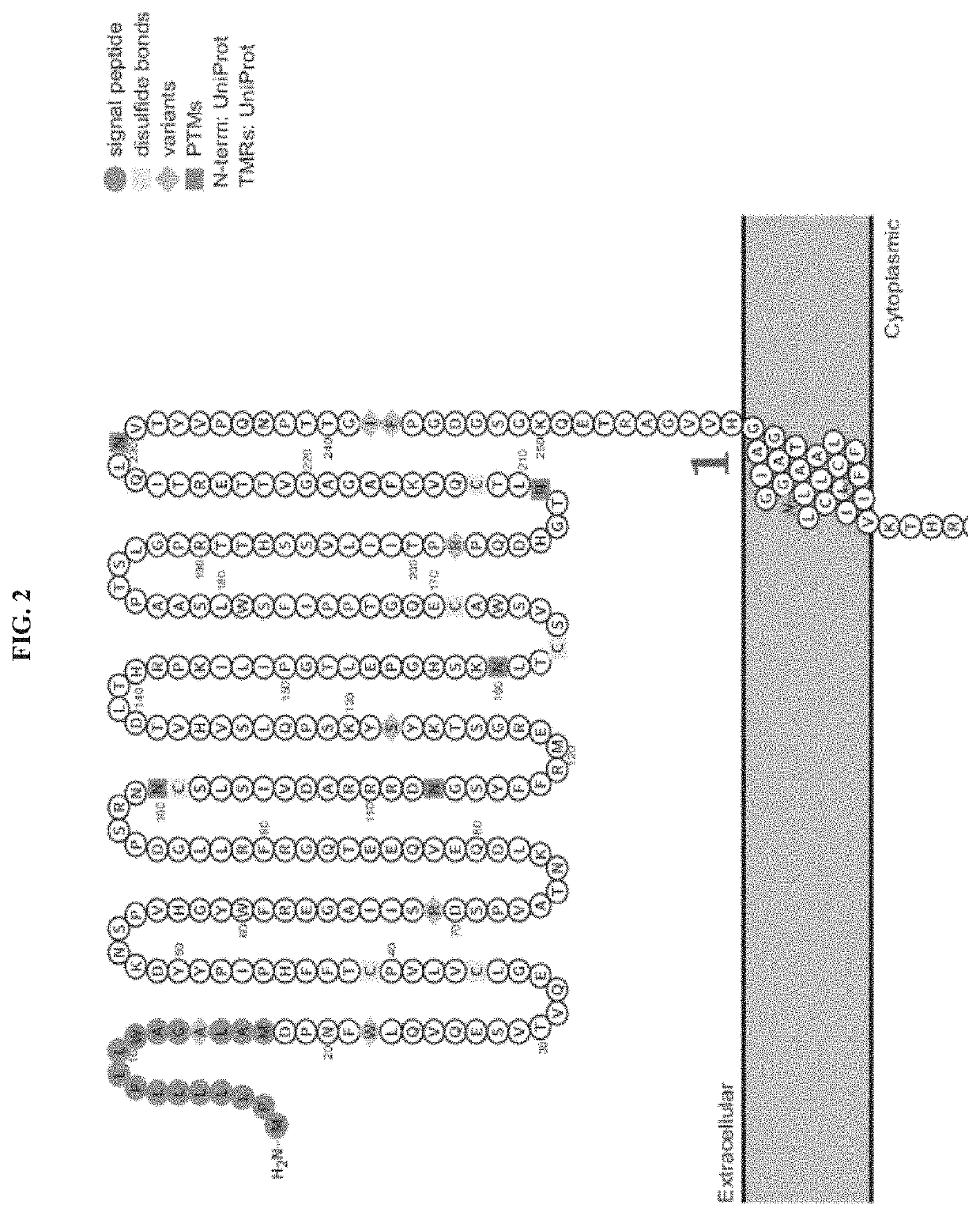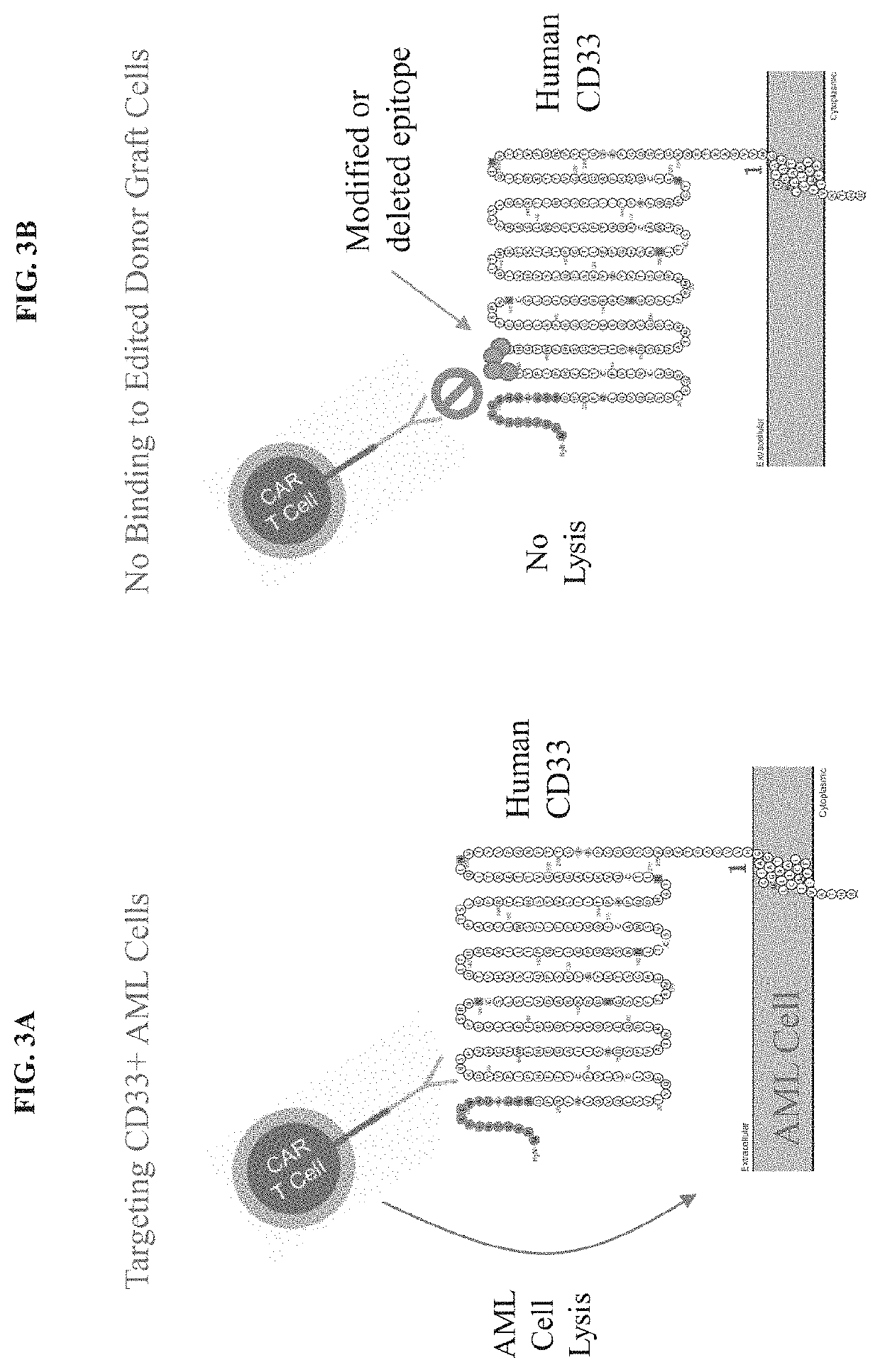Genetically engineered hematopoietic stem cells and uses thereof
a technology of hematopoietic stem cells and hematopoietic cells, applied in the direction of blood/immune system cells, peptides, drug compositions, etc., can solve the problems of limited use of such therapies, ineffective targeting cancer cells, and normal cells unharmed
- Summary
- Abstract
- Description
- Claims
- Application Information
AI Technical Summary
Benefits of technology
Problems solved by technology
Method used
Image
Examples
example 1
Exon 2 of CD19 Via CRISPR / Cas9-Mediated Gene Editing and Characterization of Cells Expressing Exon 2-Deleted CD19
[0600]This Example reports genetic engineering of CD19 genes via CRISPR / Cas9 in cells to produce edited cells expressing mutated CD19, in which the fragment encoded by exon 2 is deleted (CD19ex2), and in vitro and in vivo characterization of such edited cells. See also above disclosures for exemplary exon-2 deleted CD19 gene products.
Materials and Methods
[0601]Design of sgRNA Constructs
[0602]All sgRNAs were designed by manual inspection for the SpCas9 PAM (5′-NGG-3′) with close proximity to the target region and prioritized according to predicted specificity by minimizing potential off-target sites in the human genome with an online search algorithm (Benchling, Doench et al 2016, Hsu et al 2013). All designed synthetic sgRNAs were purchased from Synthego with chemically modified nucleotides at the three terminal positions at both the 5′ and 3′ ends. Modified nucleotides c...
example 2
Exon 2 of CD33 Via CRISPR / Cas9-Mediated Gene Editing and Characterization of Cells Expressing Exon 2-Deleted CD33
[0636]This Example reports genetic engineering of CD33 genes via CRISPR / Cas9 in cells to produce edited cells expressing mutated CD33, in which the fragment encoded by exon 2 is deleted (CD33ex2), and in vitro and in vivo characterization of such edited cells using assays described in Example 1 above or known in the art. See also above disclosures for exemplary exon-2 deleted CD33 gene products.
[0637](i) Selection of gRNAs
[0638]As shown in FIG. 17, the Cas9 nuclease is targeted to introns 1 and 2 of CD33 by two sgRNAs. Simultaneous generation of DNA double stranded breaks (DSBs) by Cas9 leads to excision of the region including complete loss of exon 2. The ends distal to the cut site are repaired through ligation of introns 1 and 2 via non-homologous end joining (NHEJ) with the repaired junction indicated by the triangle. Transcription of the modified genome results in ex...
example 3
Multiplex Genomic Editing
[0656]Efficient double genomic editing of CD19 and CD33 genes in HSC cells were performed in either NALM-6 cells or in HSCs following conventional methods or those described herein. Table 8 below provides the gRNAs targeting exon 2 of CD19 and exon 3 of CD33.
TABLE 8Guide RNAs for Double Editing of CD19 and CD33GenegRNA NamegRNA SequencePAMLocationCD19CD19_gRNA-CACAGCGTTATCTCCCTCTGGGTExon 219(SEQ ID NO: 66)CD33CD33_gRNA-CCCCAGGACTACTCACTCCTCGGExon 337(SEQ ID NO: 67)
[0657]Genomic DNA was isolated from bulk-edited cells and TIDE assays were performed to examine genomic editing in NALM-6, HL-60 cells and HSCs. Results are depicted in FIGS. 24A-24D. The results obtained from this study show that ˜70% of the HSCs include mutations in both loci of the CD19 gene and ˜80% of the HSCs include mutations in both loci of the CD33 gene, indicating that at least 50% of the double-edited cells have both edited CD19 gene and edited CD33 gene on at least one chromosome. Simil...
PUM
| Property | Measurement | Unit |
|---|---|---|
| pharmaceutical composition | aaaaa | aaaaa |
Abstract
Description
Claims
Application Information
 Login to View More
Login to View More - R&D
- Intellectual Property
- Life Sciences
- Materials
- Tech Scout
- Unparalleled Data Quality
- Higher Quality Content
- 60% Fewer Hallucinations
Browse by: Latest US Patents, China's latest patents, Technical Efficacy Thesaurus, Application Domain, Technology Topic, Popular Technical Reports.
© 2025 PatSnap. All rights reserved.Legal|Privacy policy|Modern Slavery Act Transparency Statement|Sitemap|About US| Contact US: help@patsnap.com



